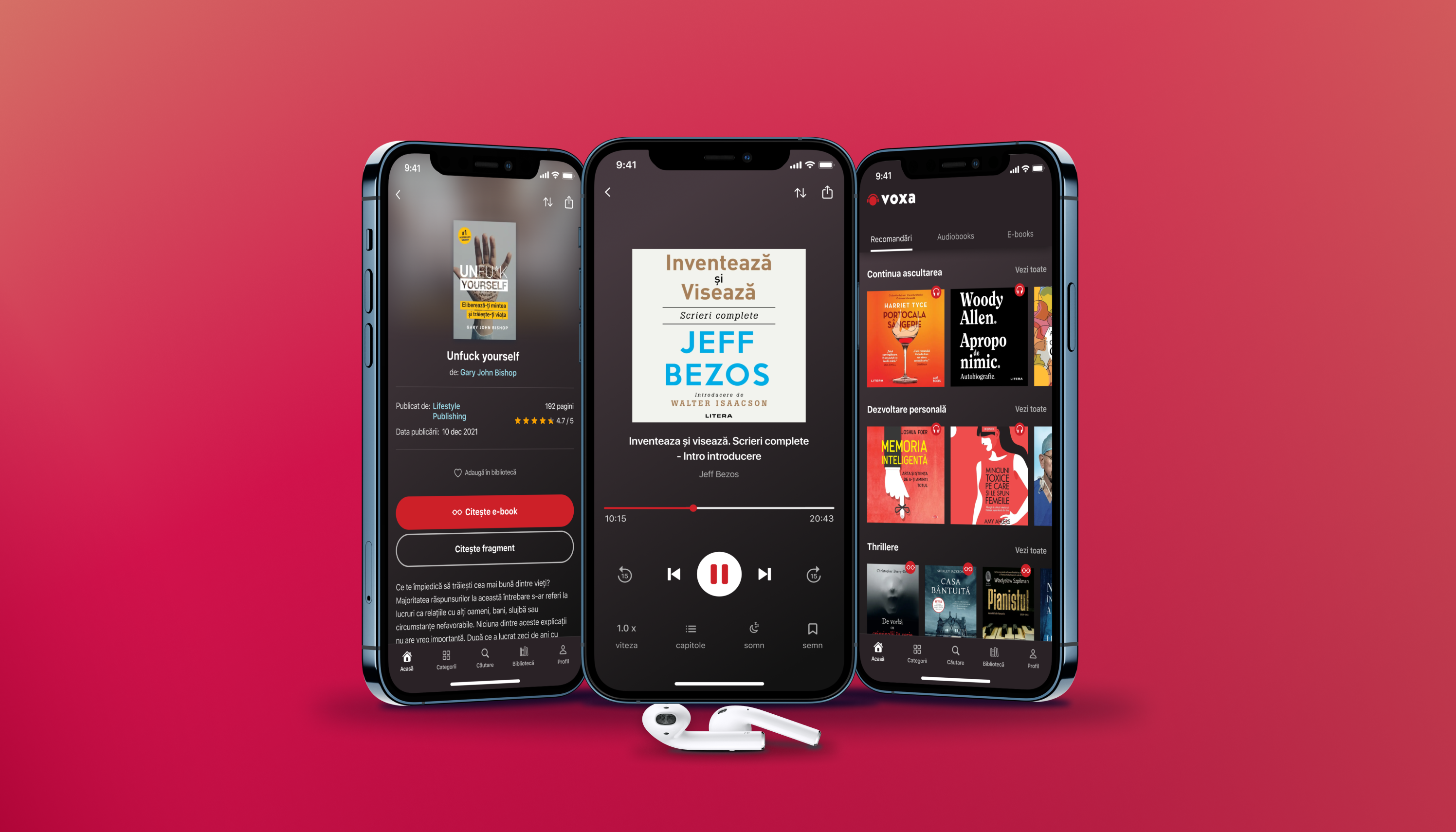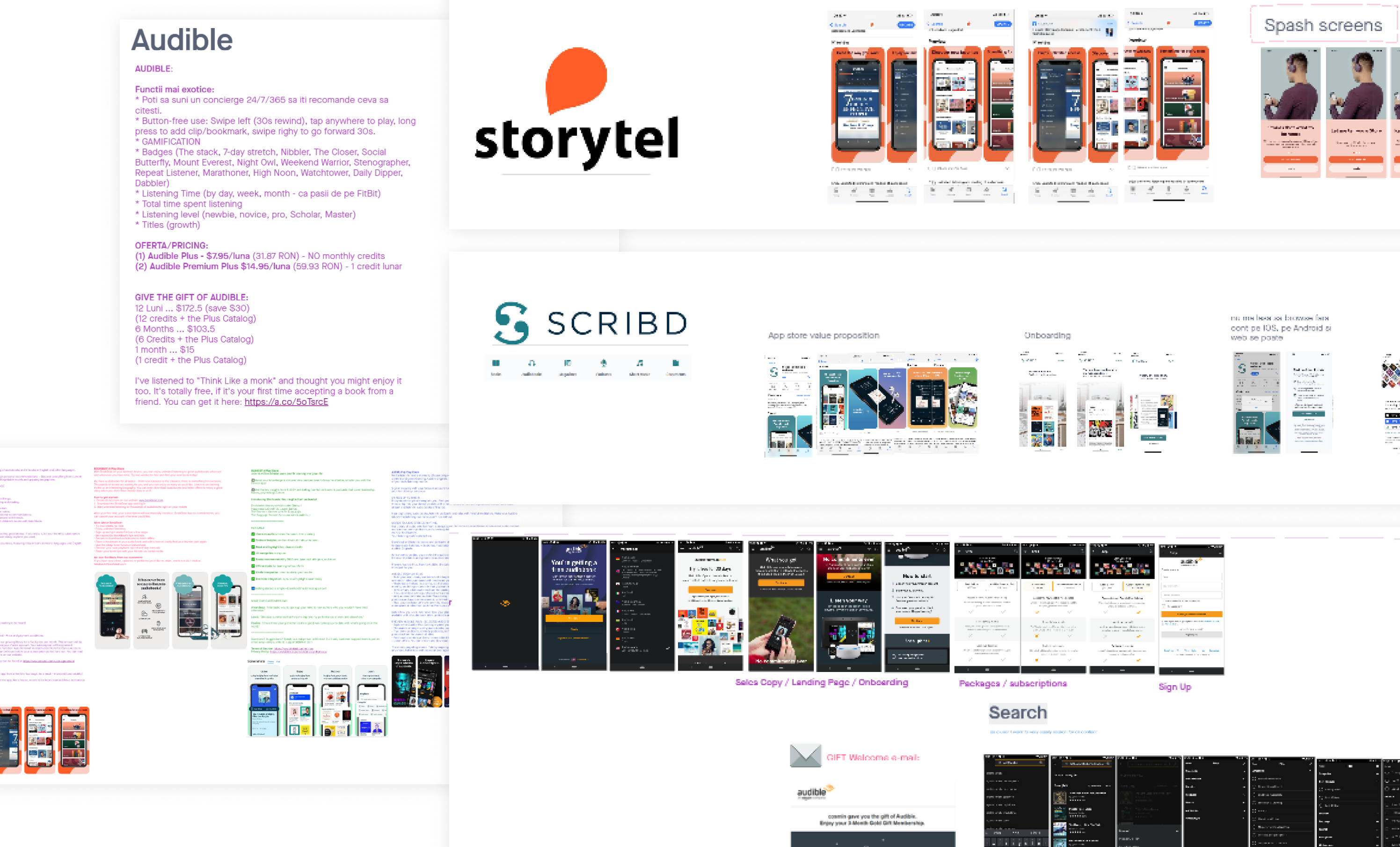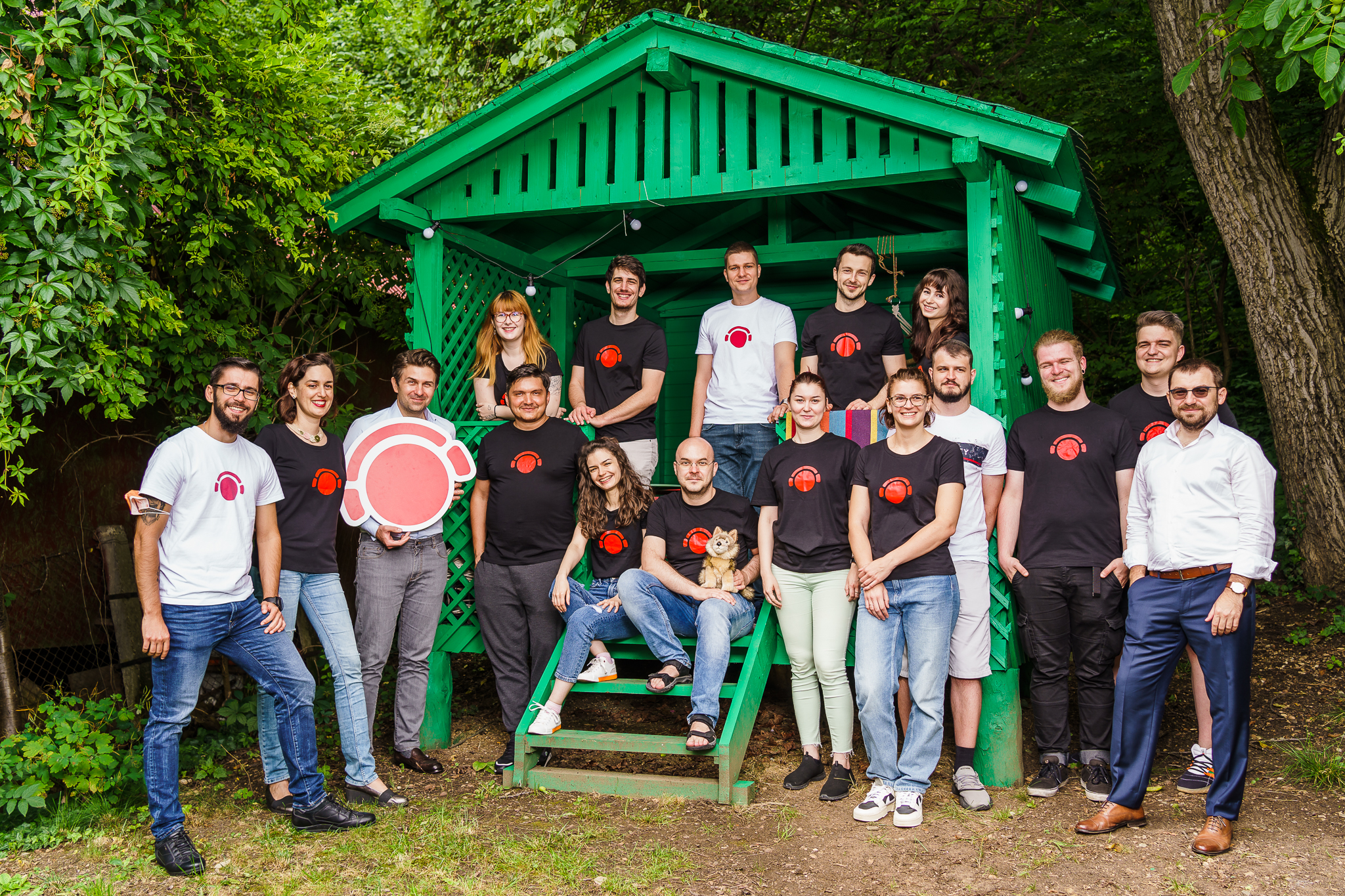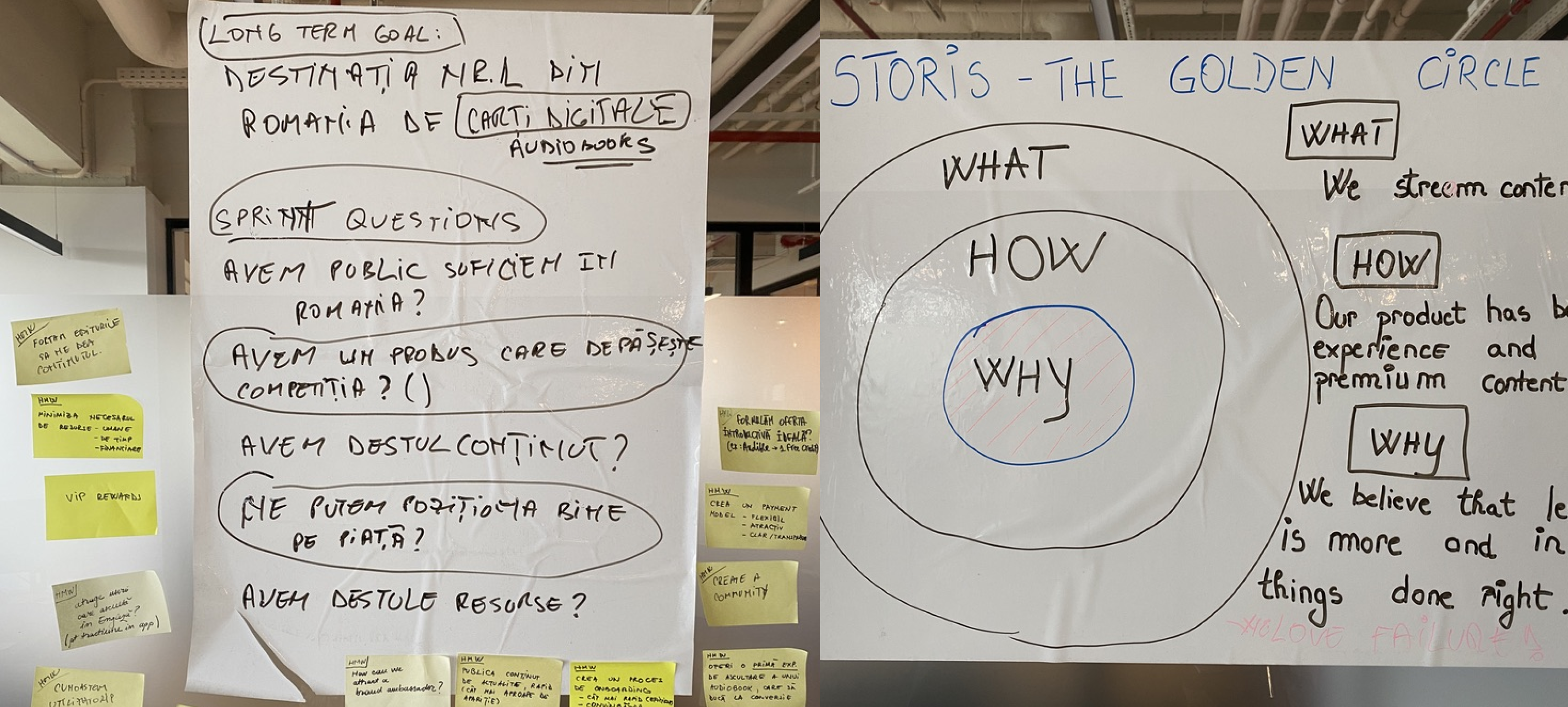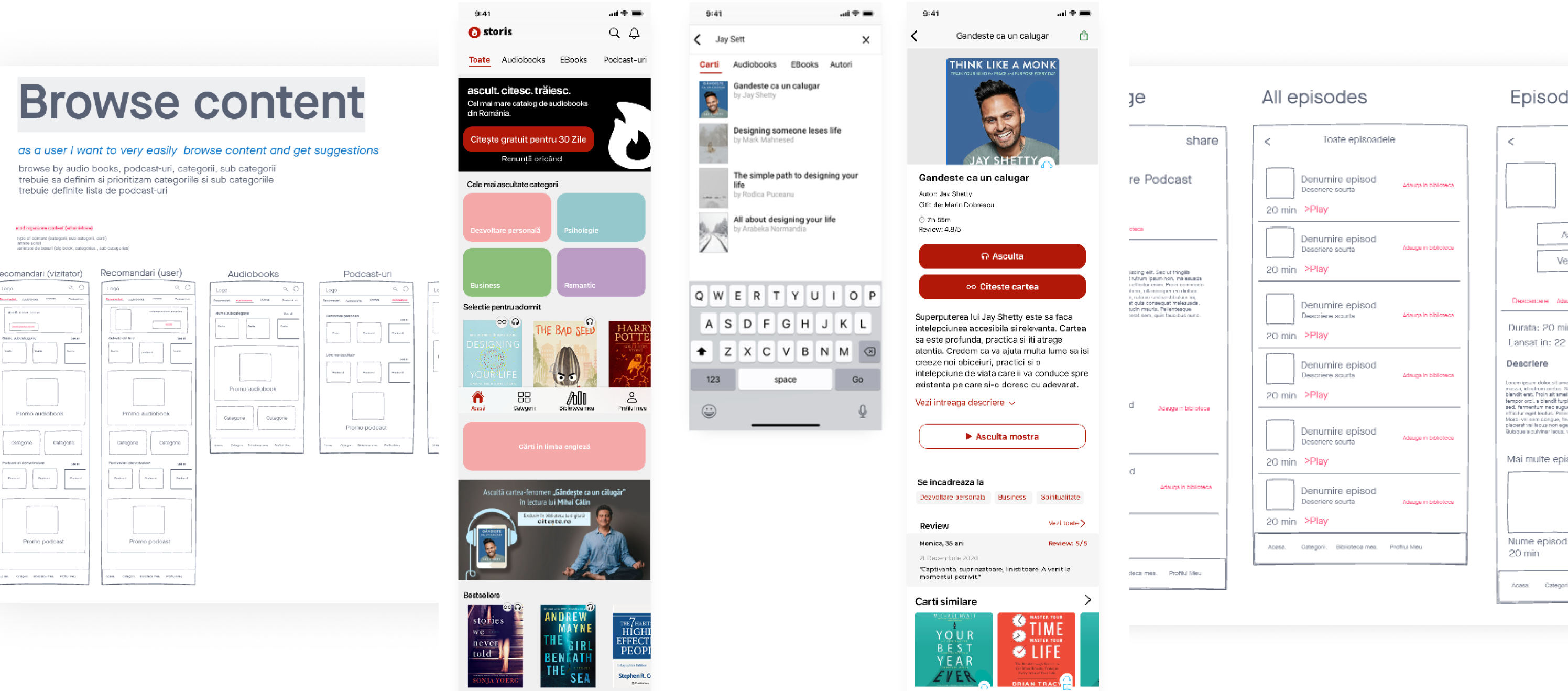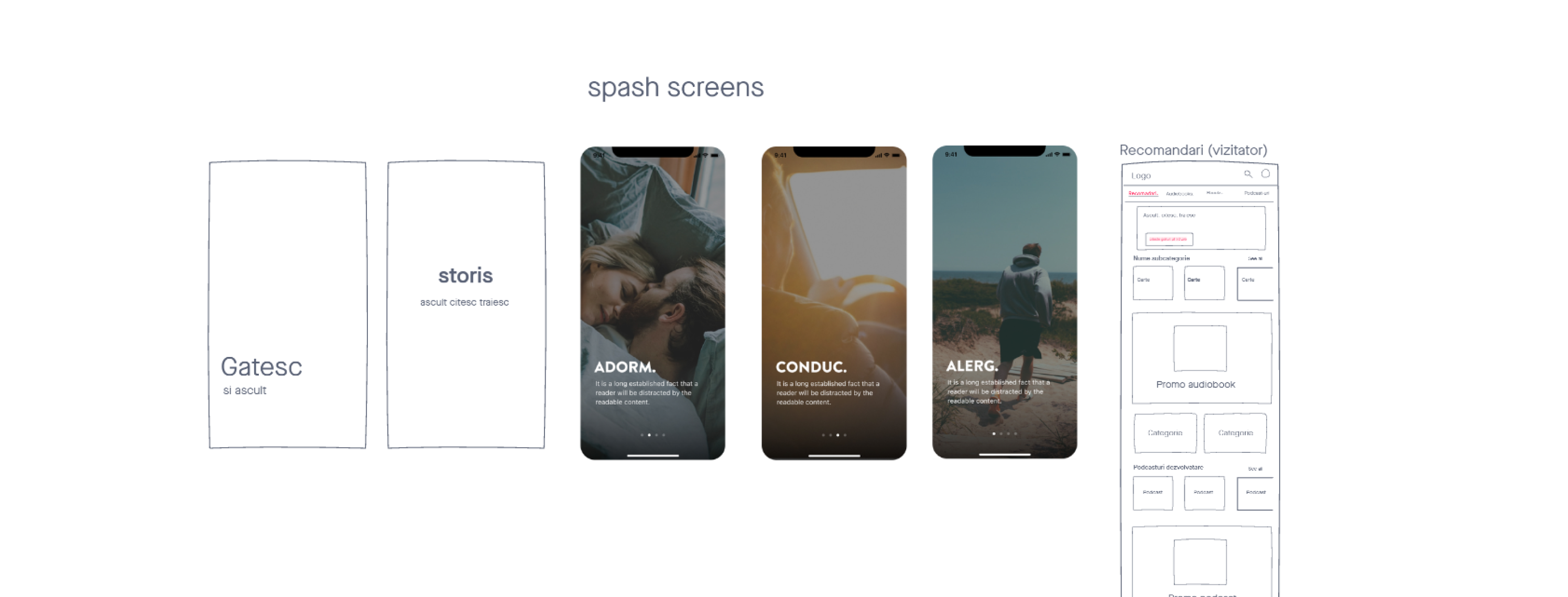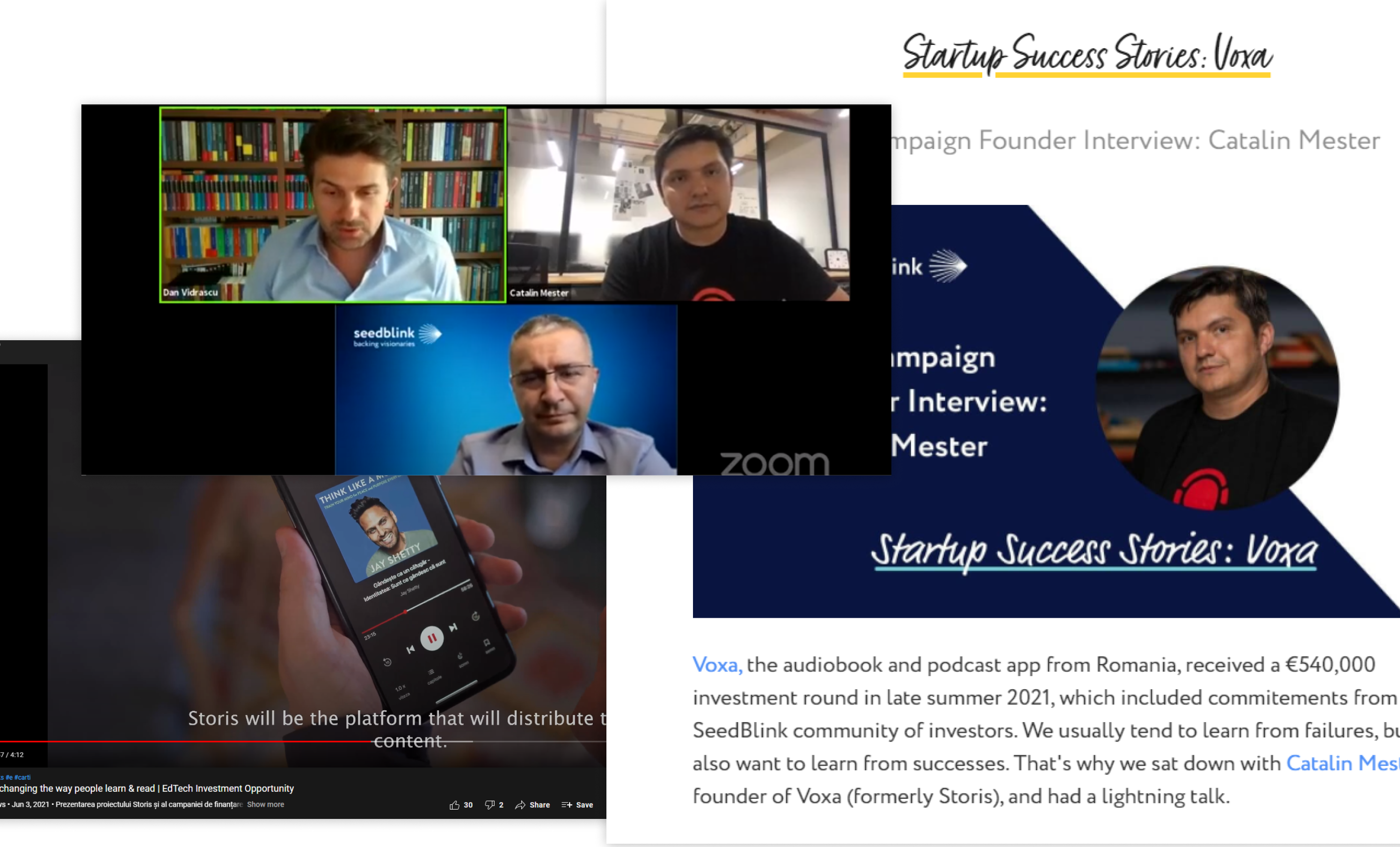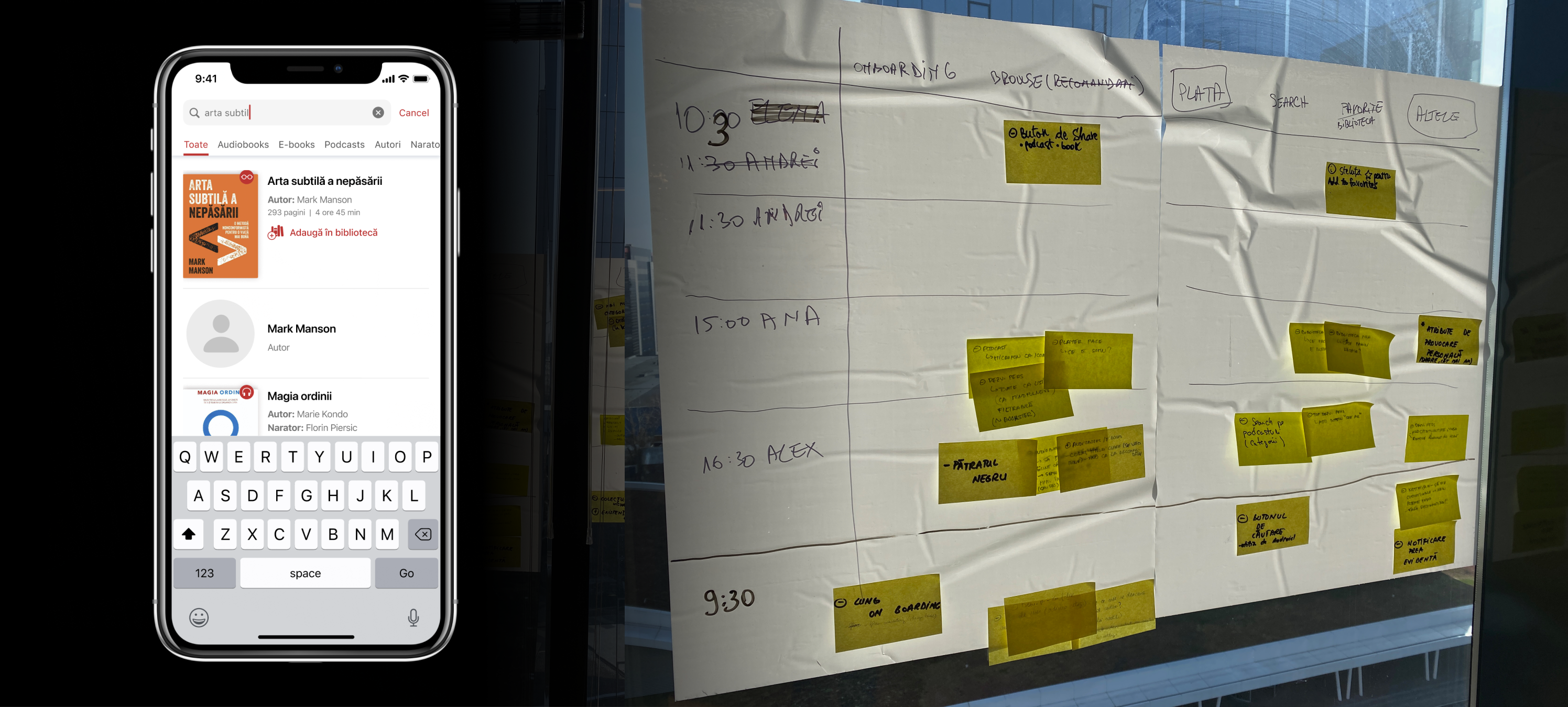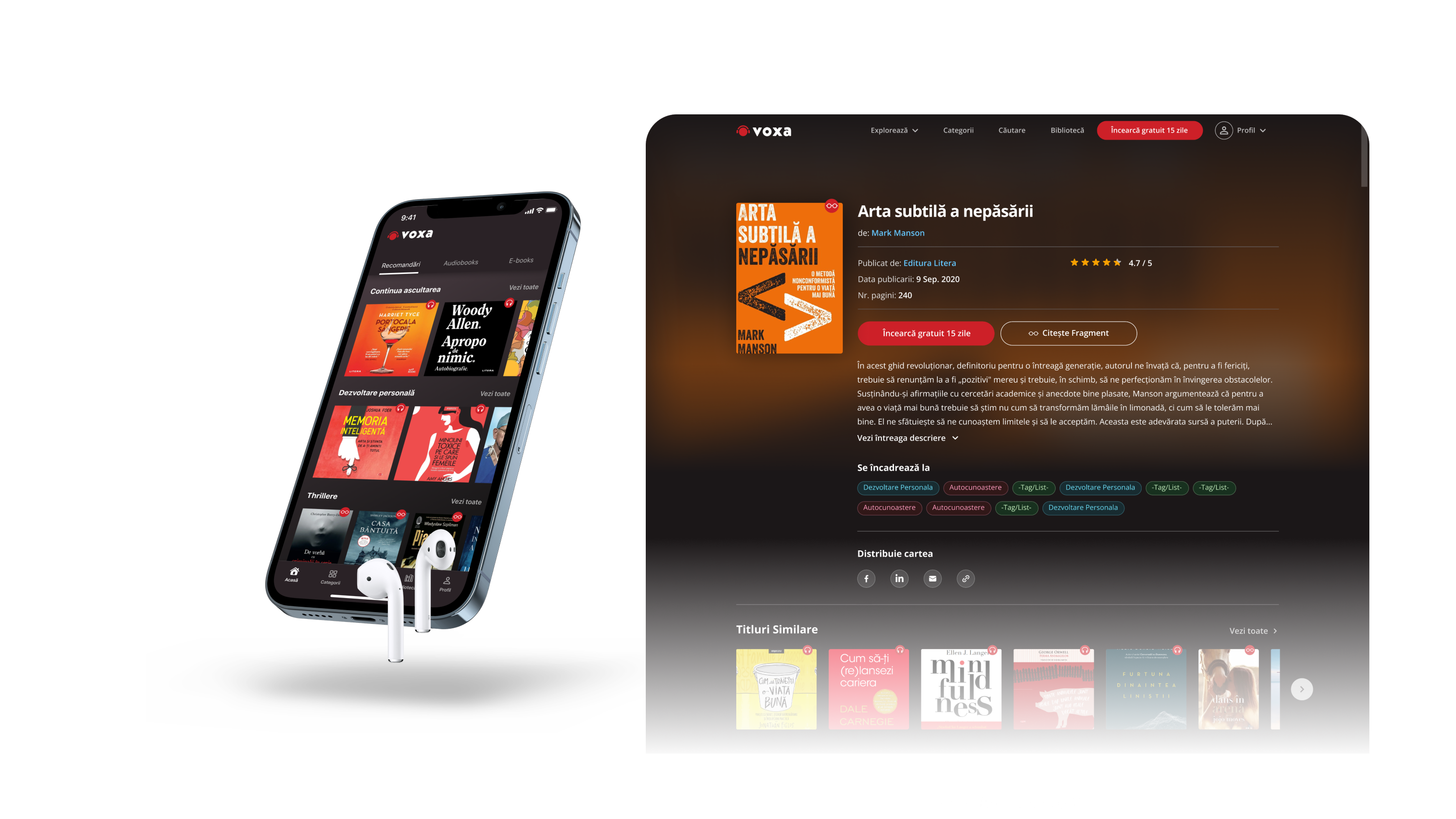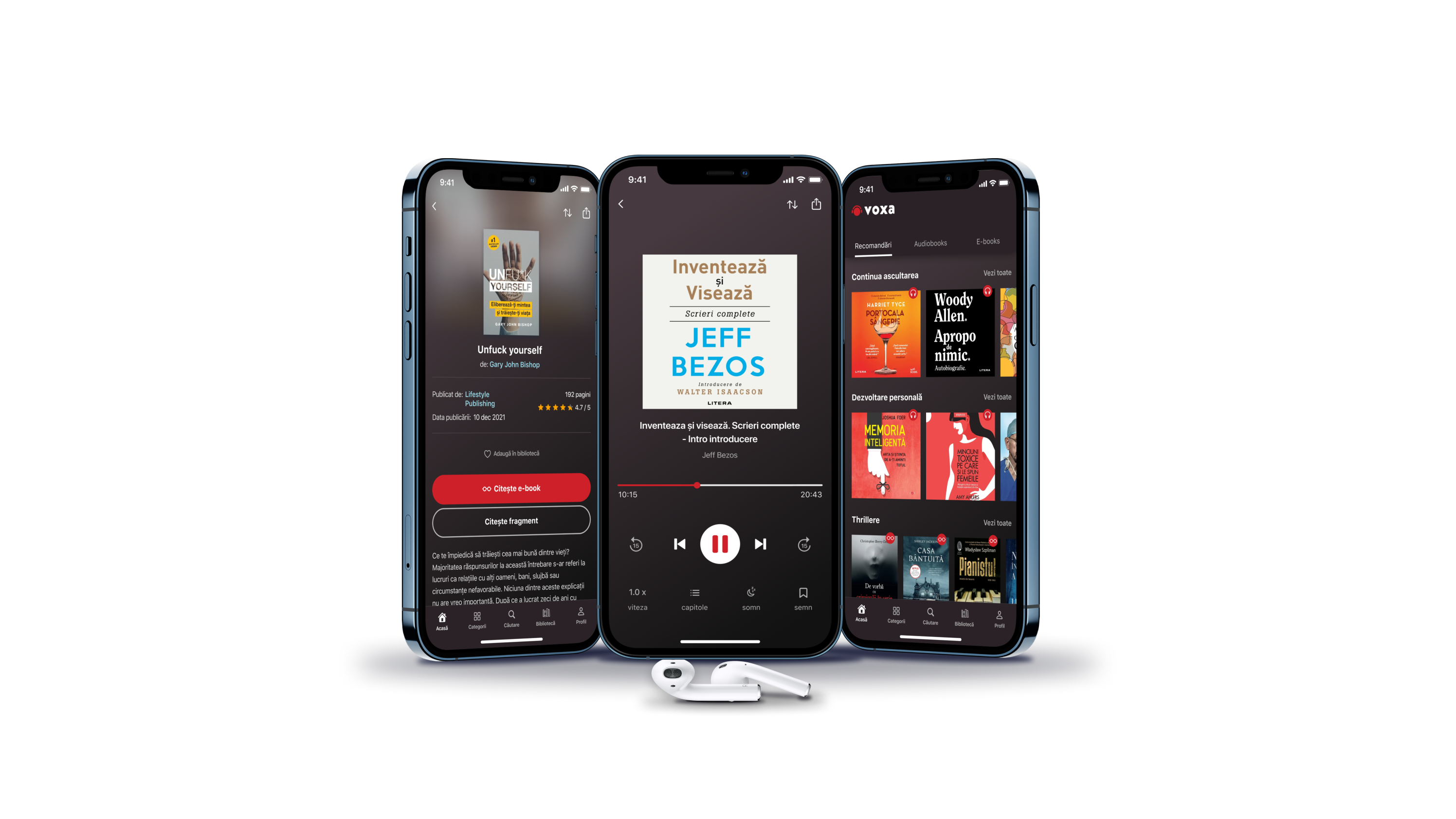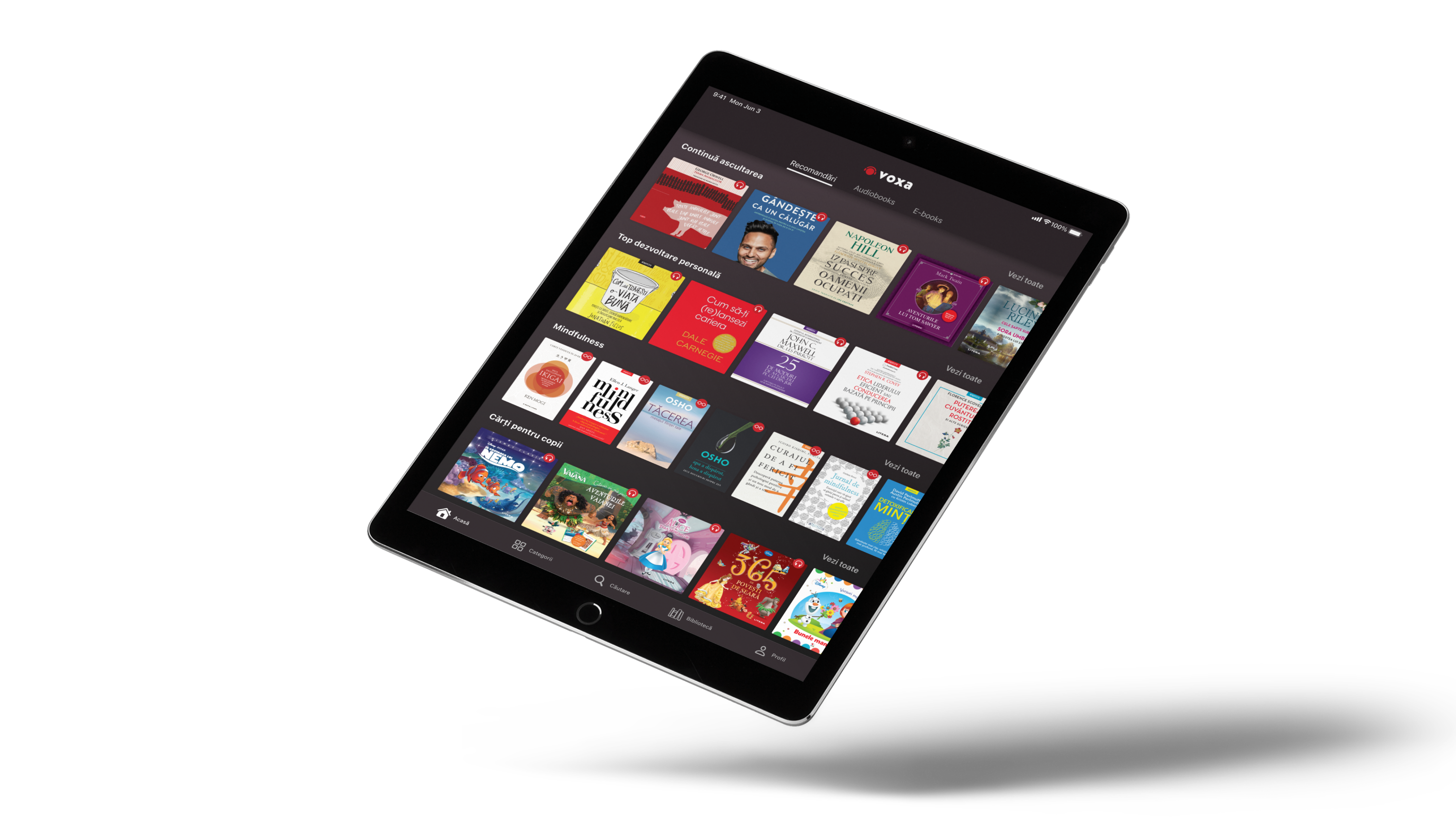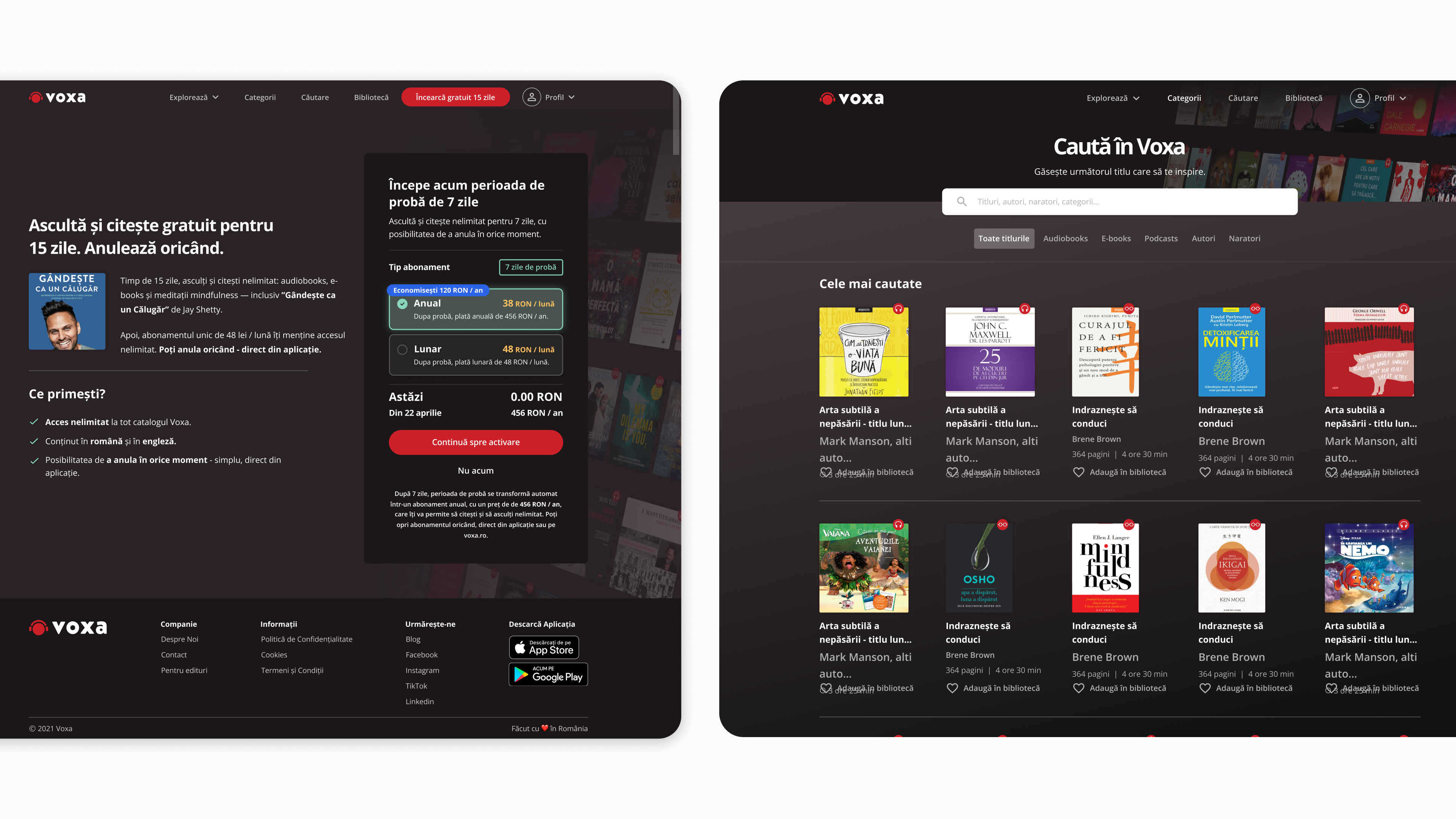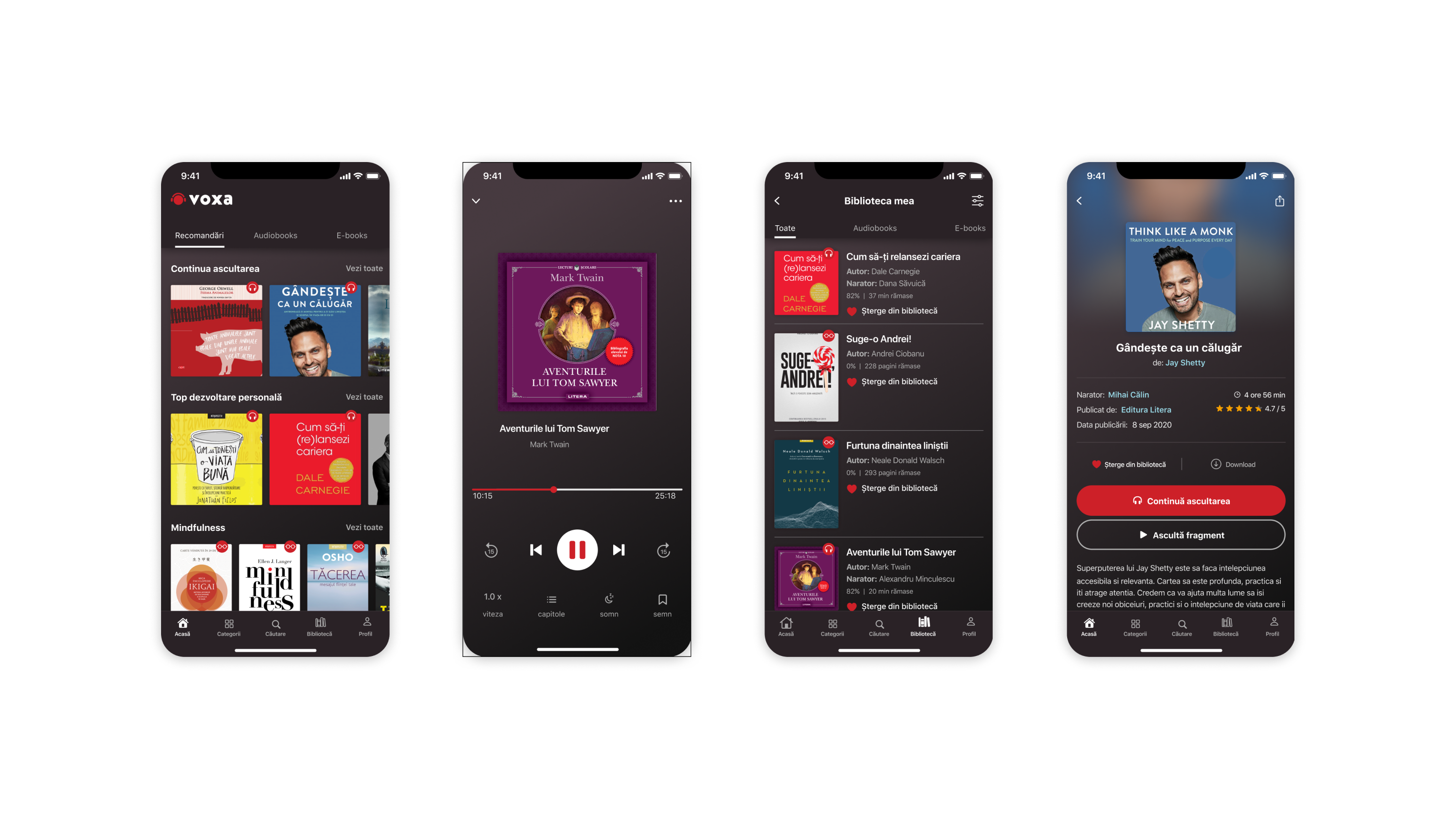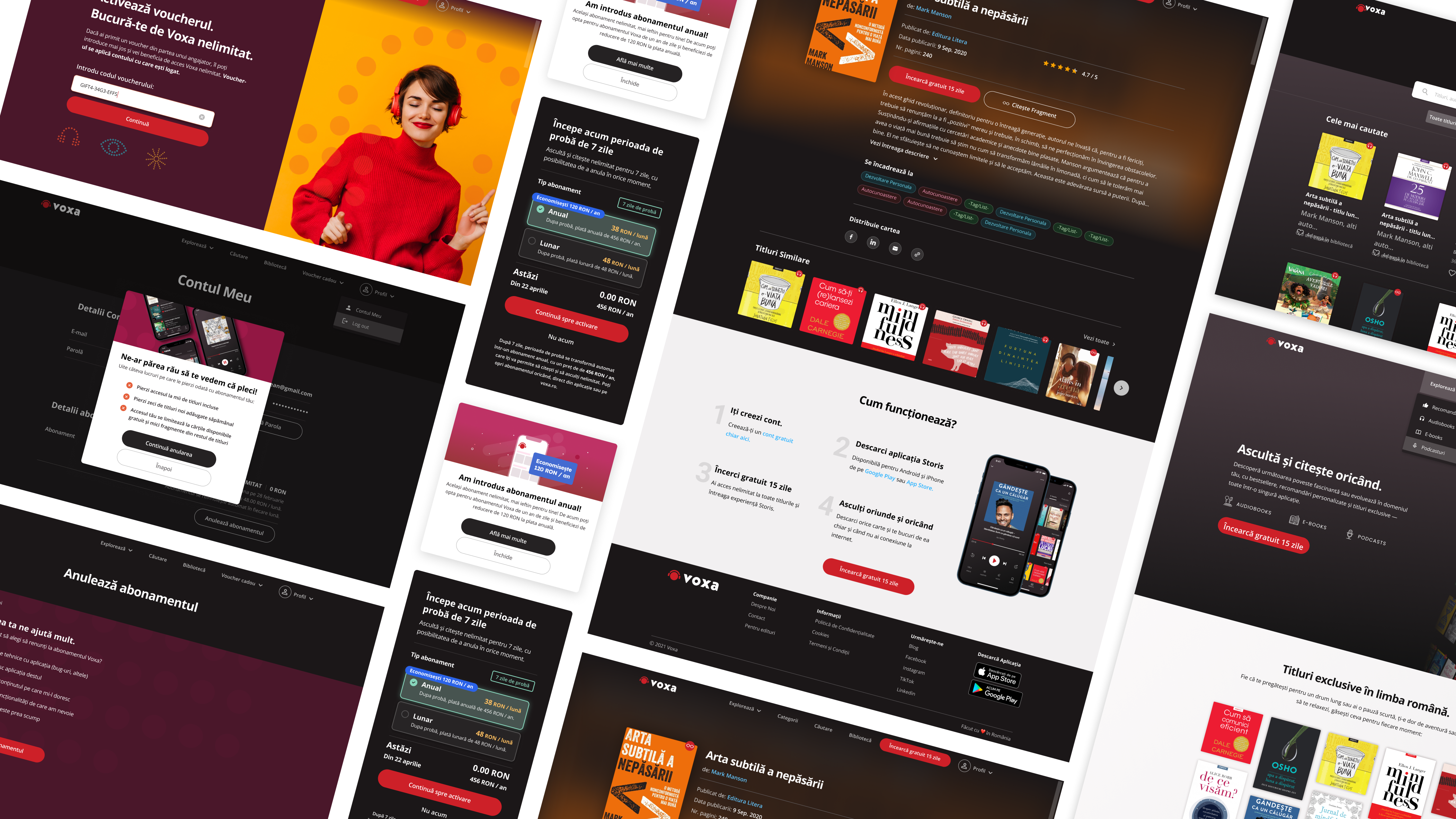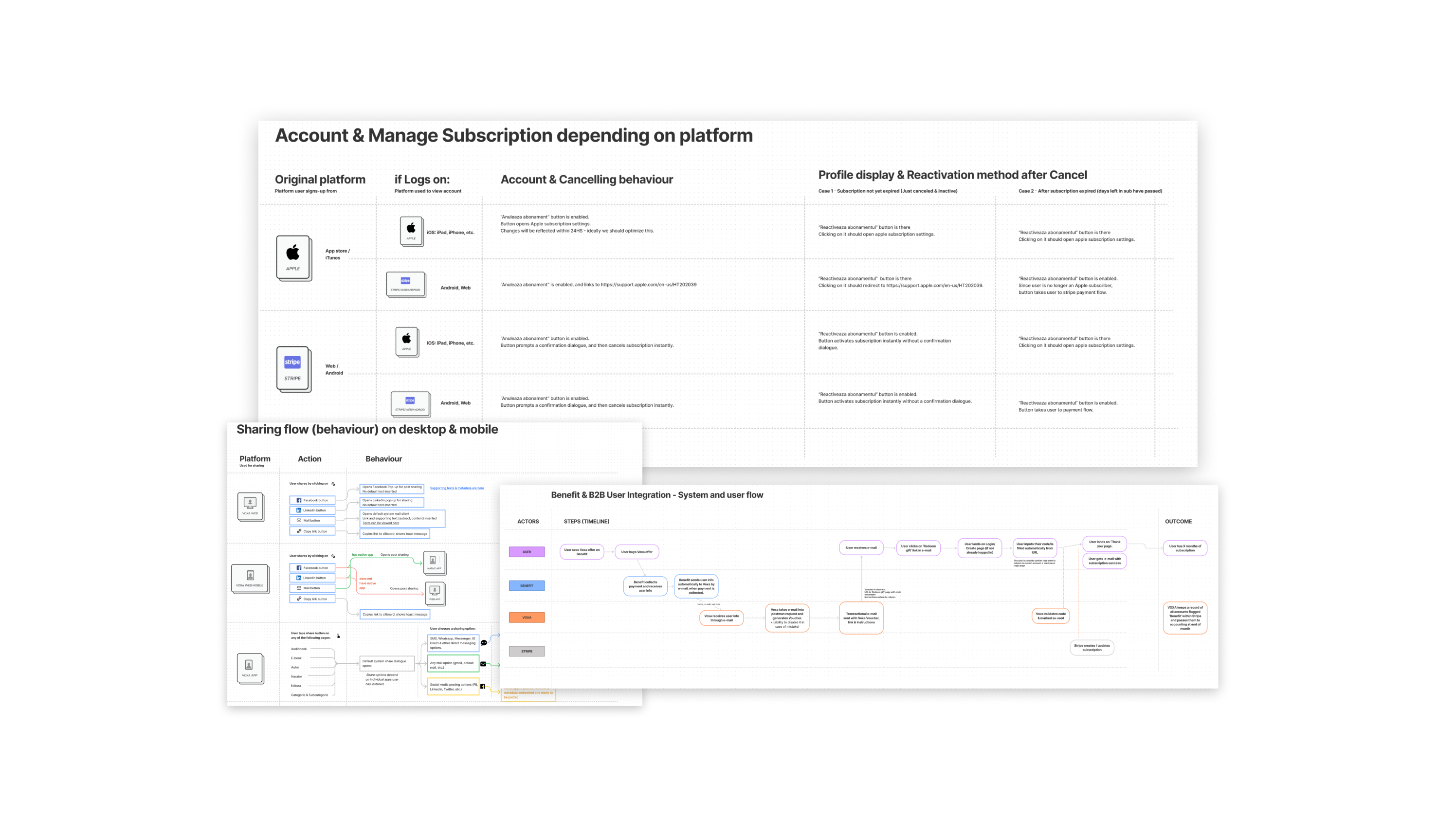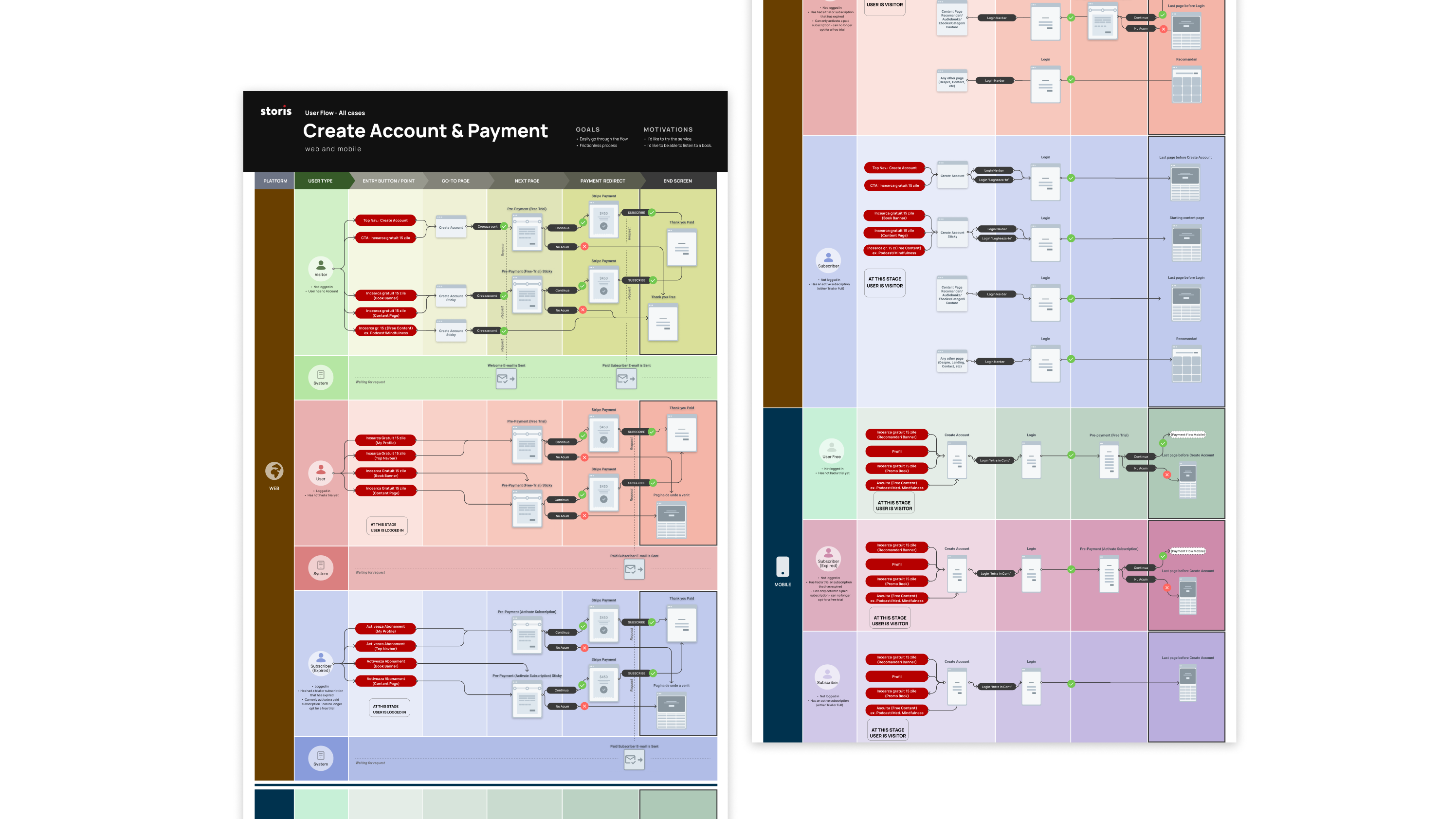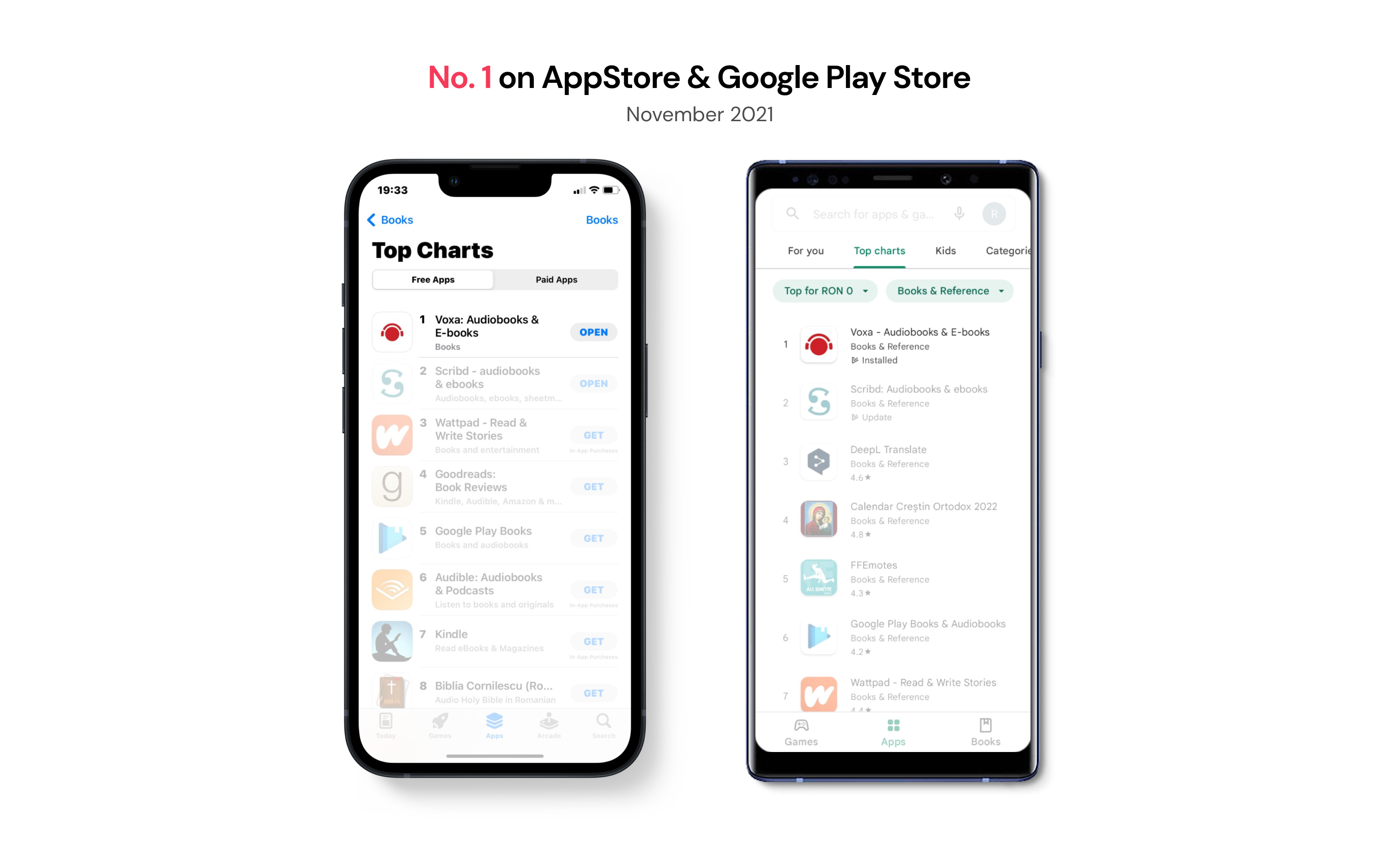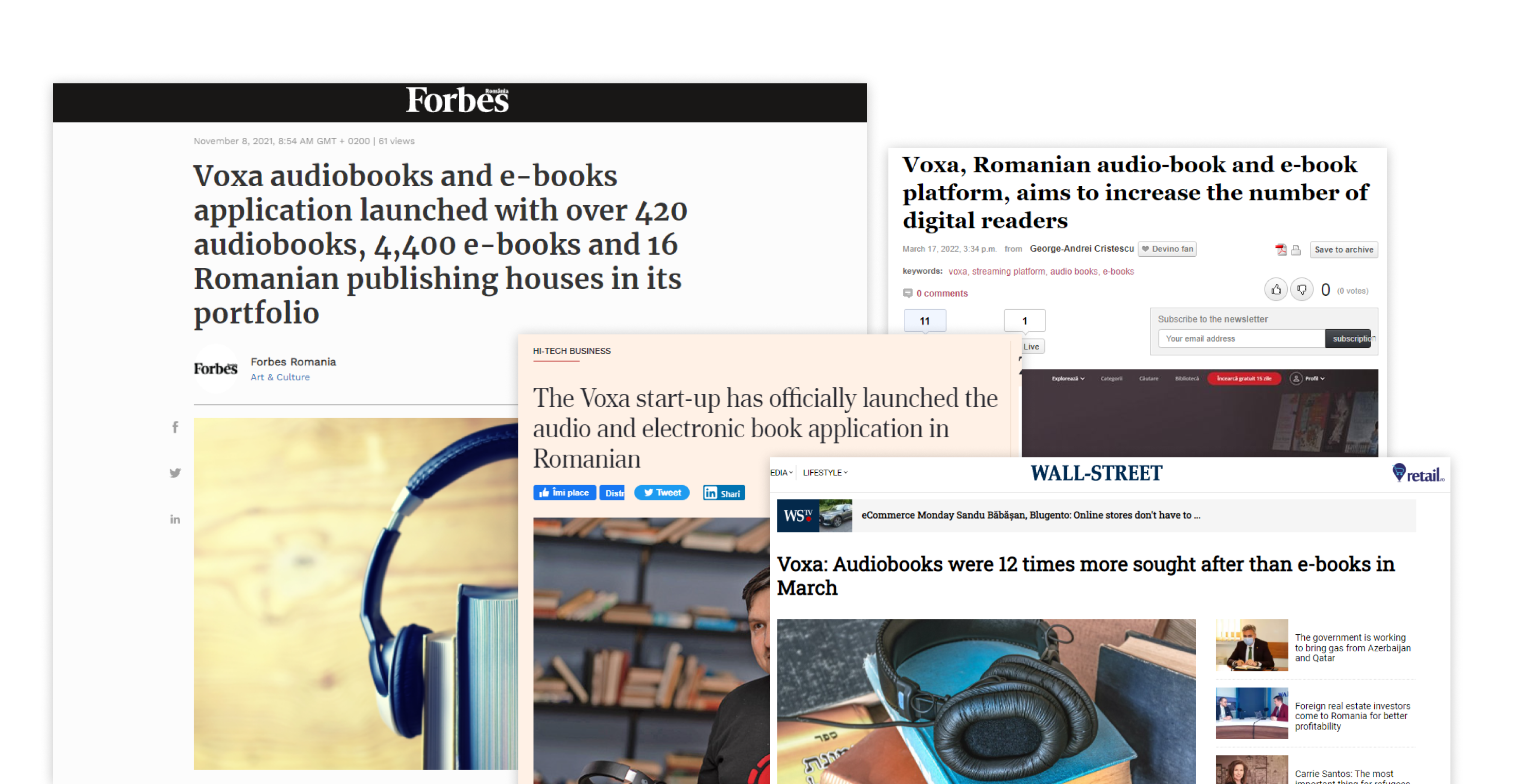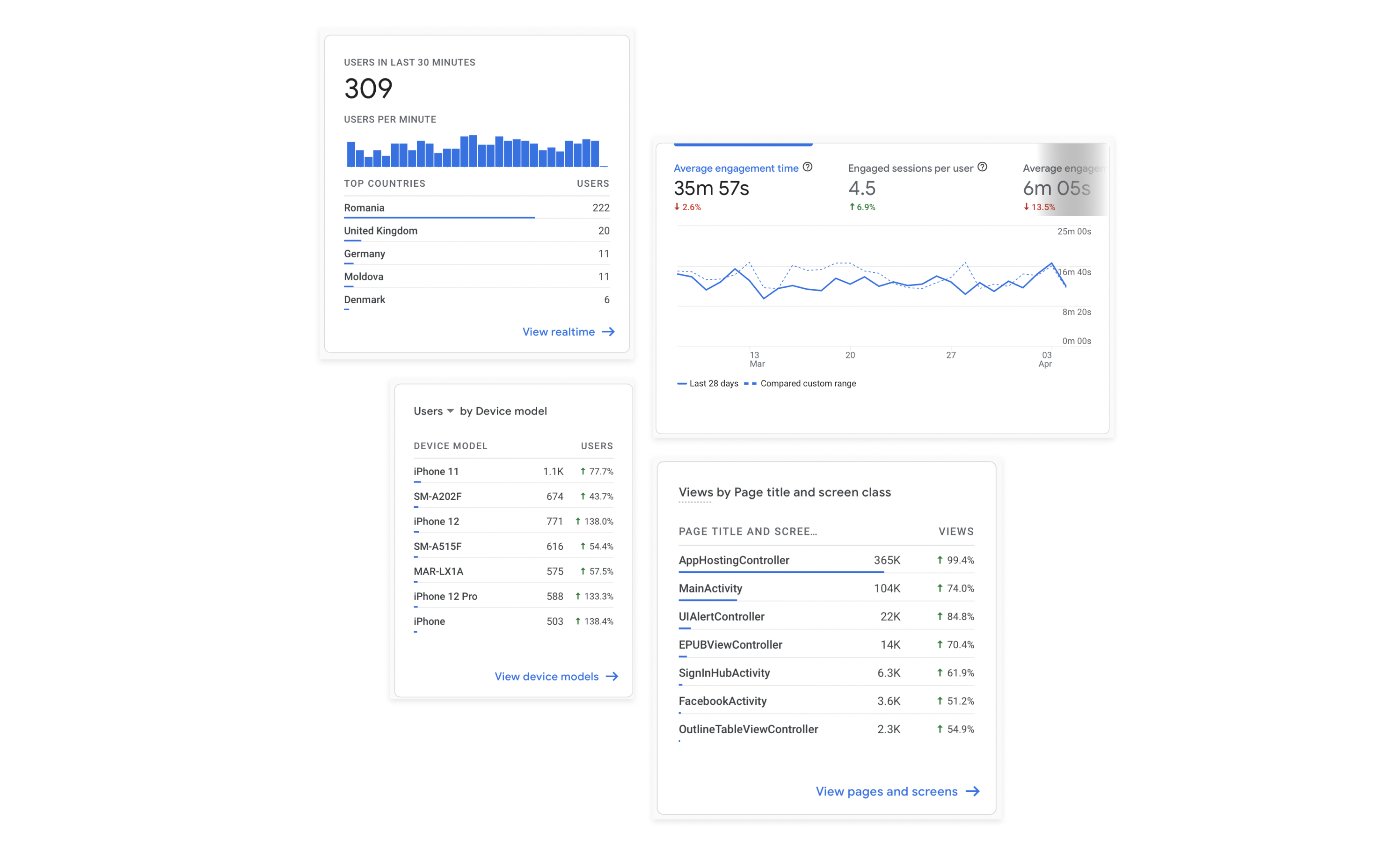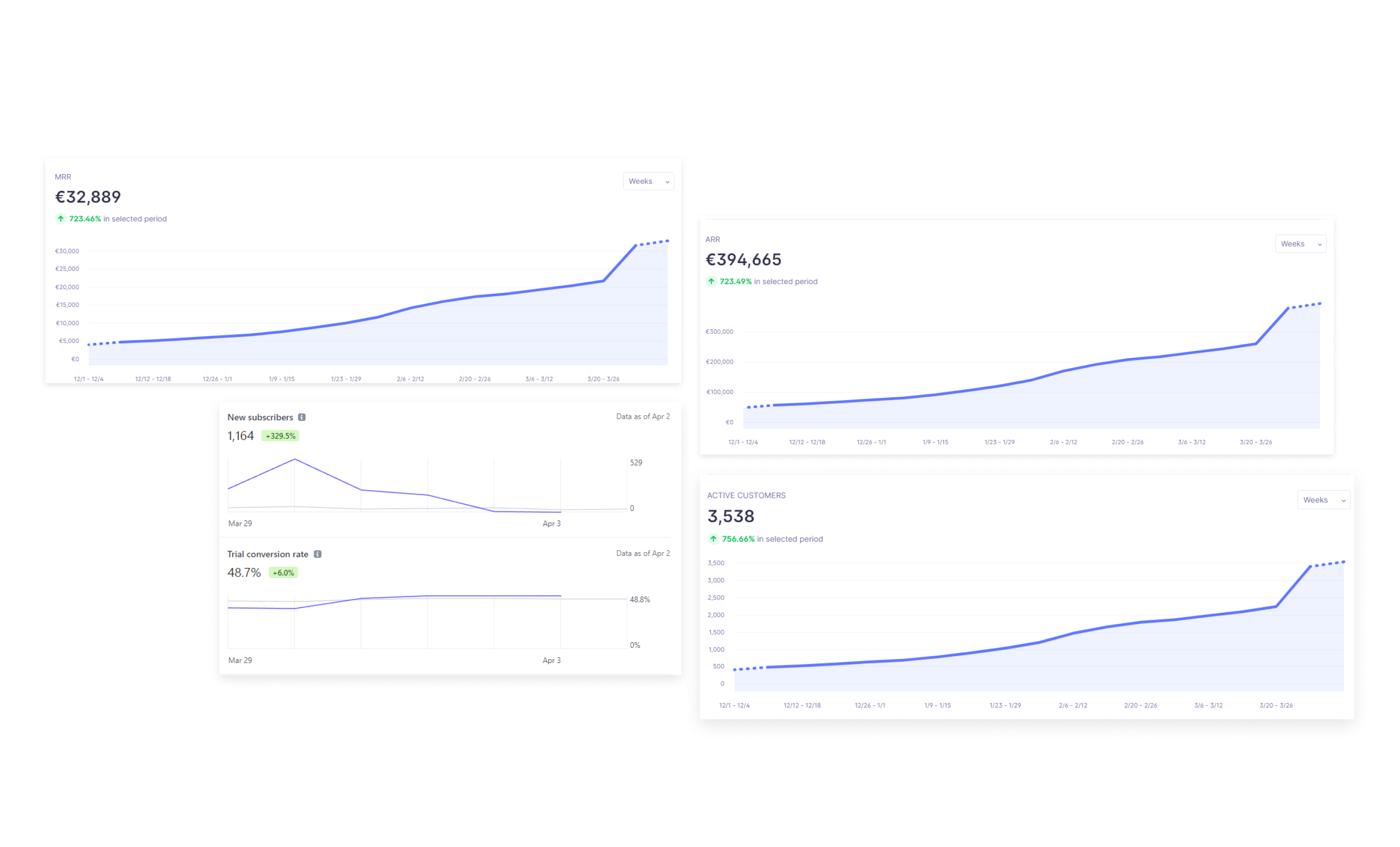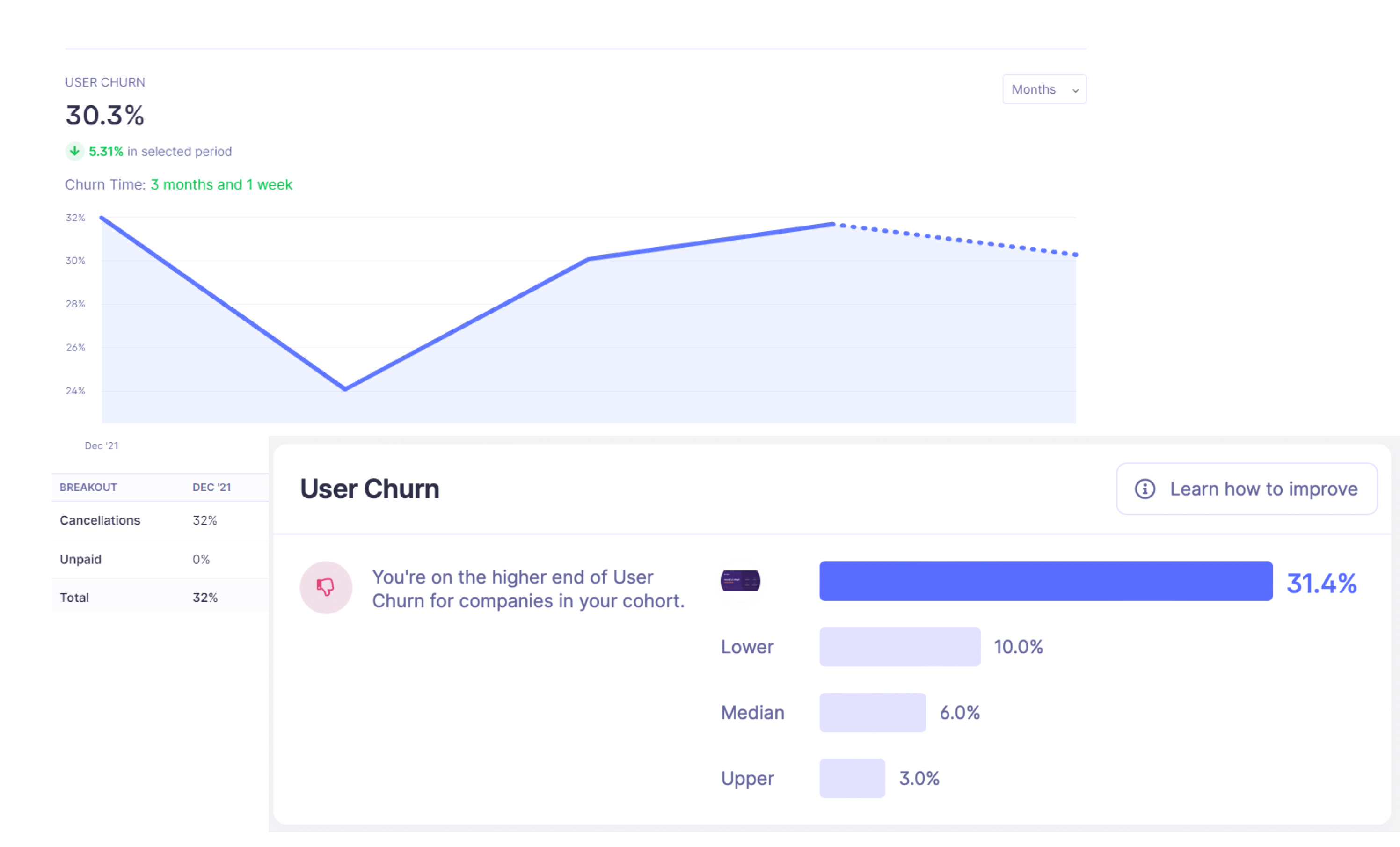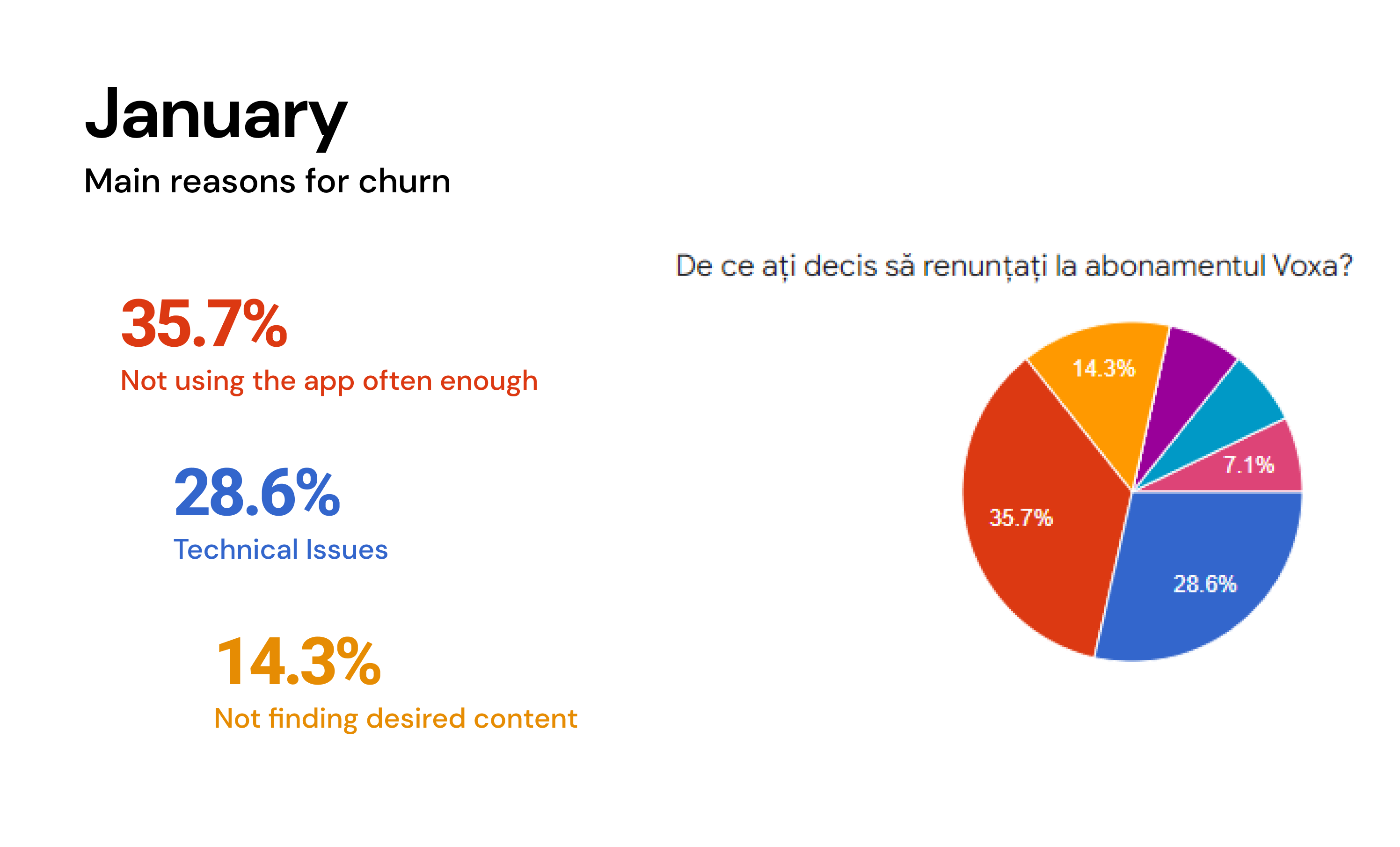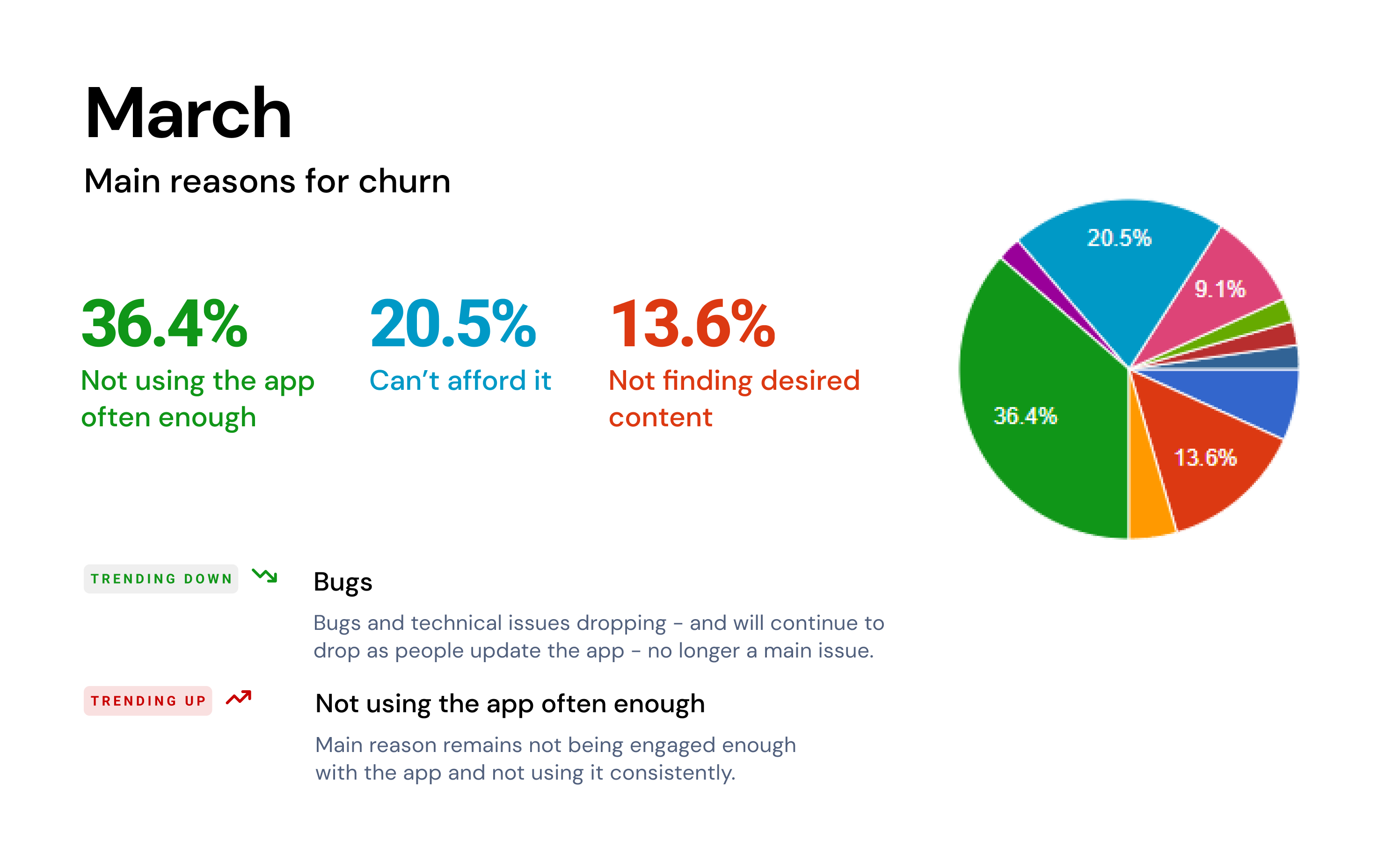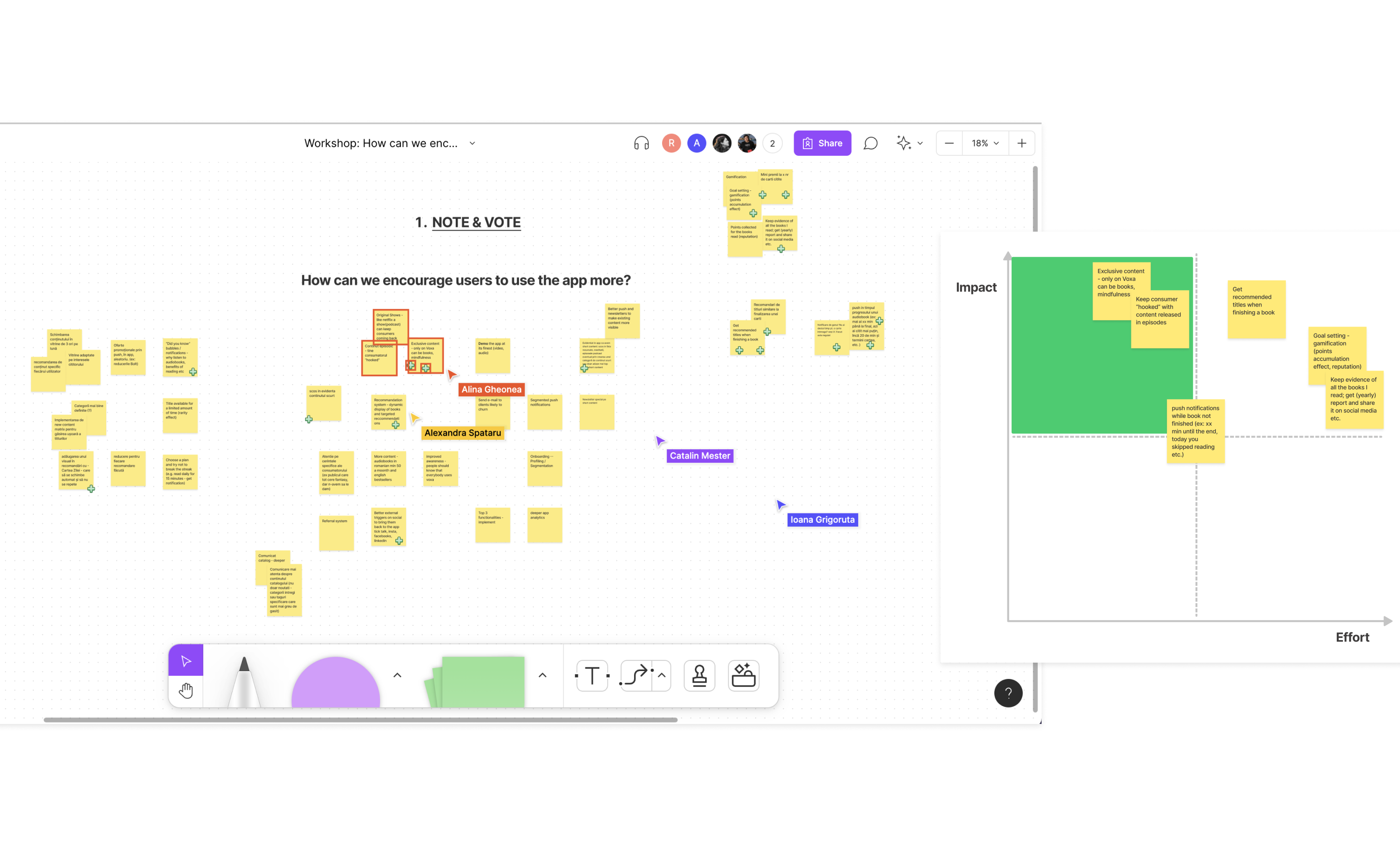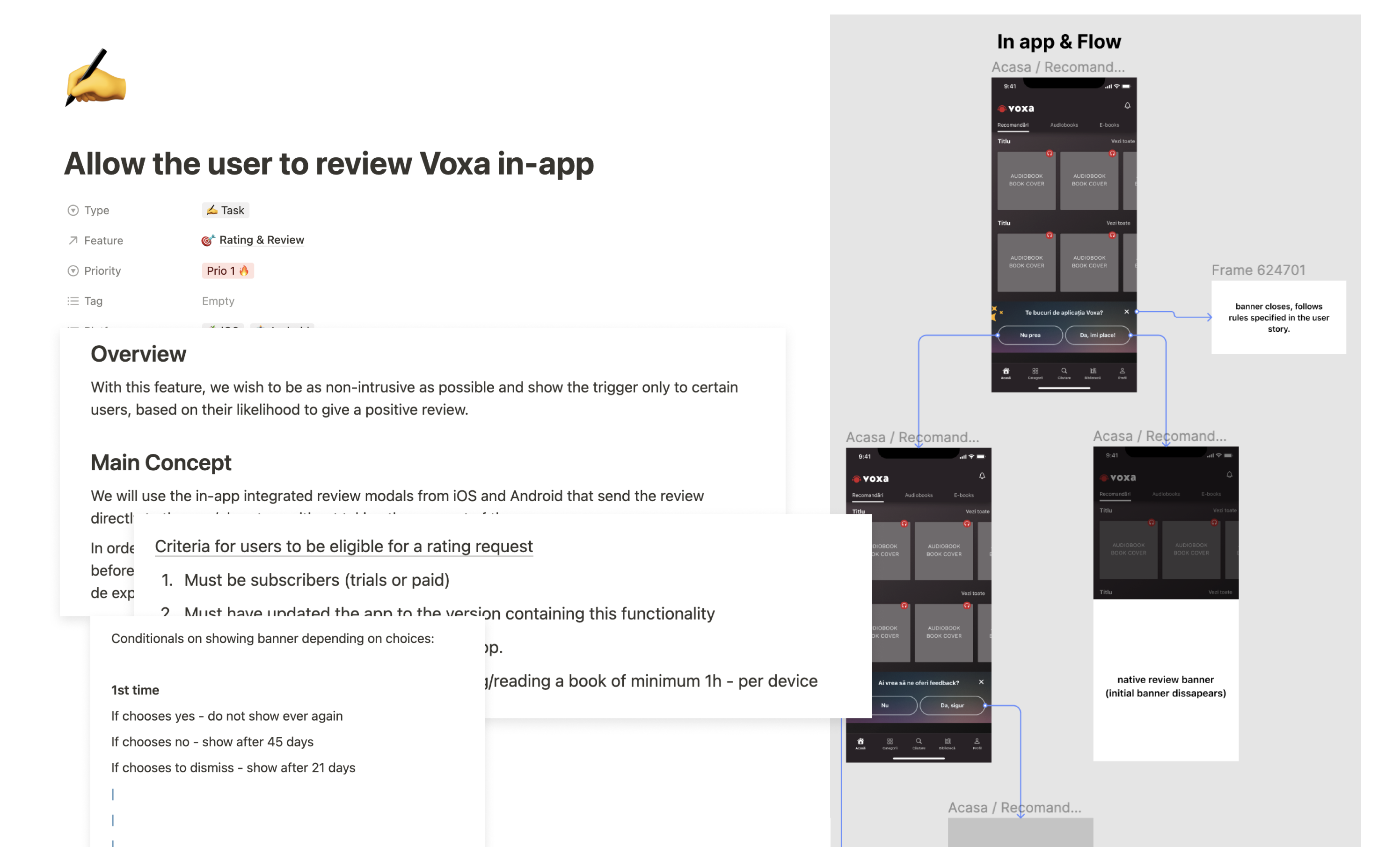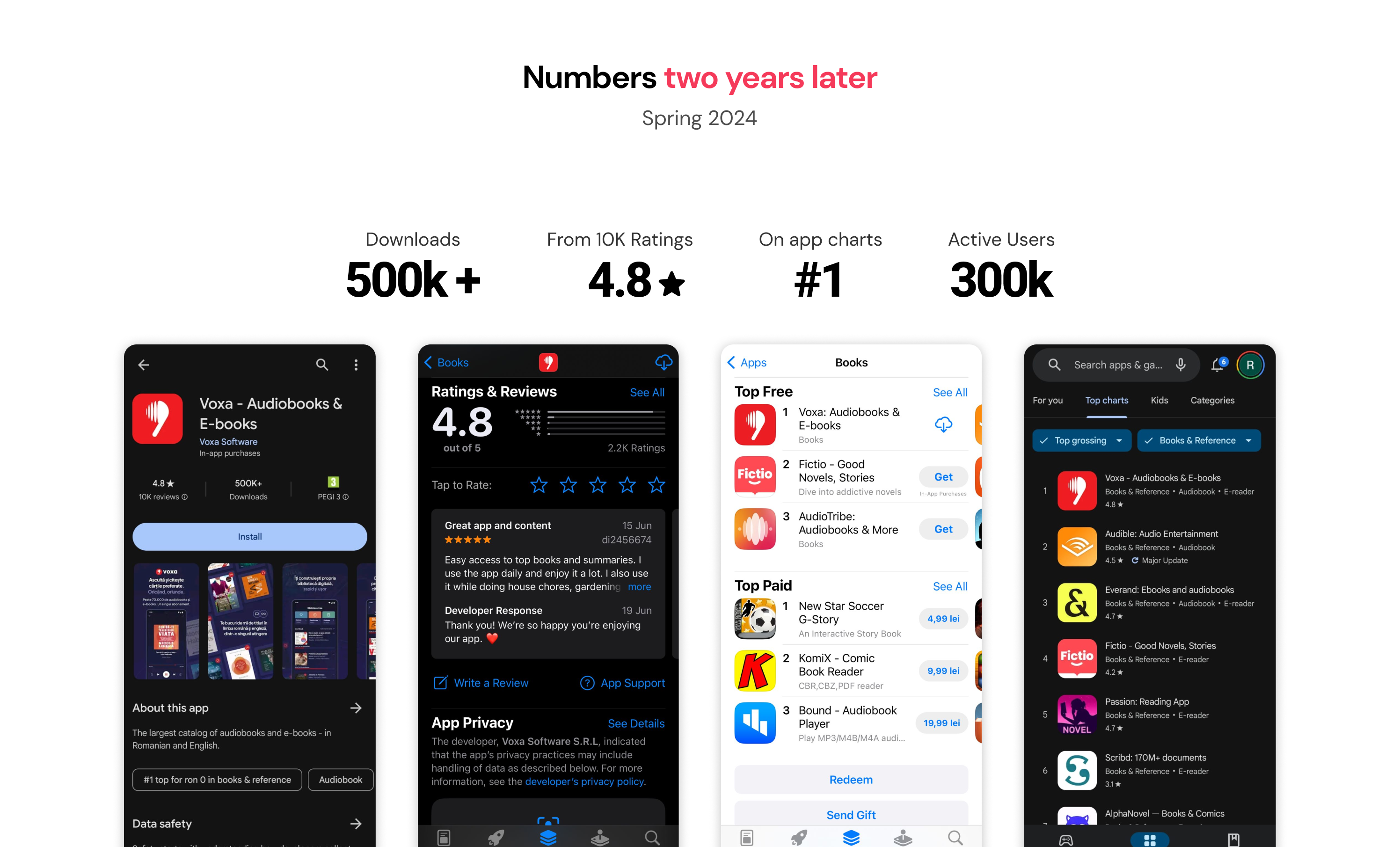01
CONTEXT
Audiobooks & e-books, along with digital content, have been on a steep rise in the past ten years, with the success of companies such as Audible, Scribd, or Storytel. In Romania, the demand for e-books and audiobooks has surged over time, yet platforms offering Romanian content were scarce, leaving a significant gap in the market.
None of the big names in the digital books industry were addressing romanian users – a few of the major players had romanian content but not enough to draw the significant masses of romanians to read digitally.
Although Romania was heavily infused by digital content in all other areas, the major market share for books was still the traditional paperback. As little as 1% of annual book sales were digital, compared to 20-30% in the rest of the European countries.
There was no audiobook & e-book app on the market, and the user base was heavily segmented between existing international apps.
Backed by the largest publishing house in Romania, Litera, Voxa would emerge as a subscription-based streaming platform providing a vast library of predominantly Romanian audiobooks and eBooks, catering to both iOS and Android users. With already experienced leadership, there was a strong potential for Voxa to be a real success.
02
STARTING UP
As a startup, securing funding was crucial. With a large initial backing from its founder, Litera, Romania’s largest publishing house, Voxa subsequently secured additional investments from angel investors & VC firms through SeedBlink rounds that sustained its initial growth.
I was principal designer between Feb. 2021 and May 2022, closely collaborating with the founders and CEO in defining the visual direction for the app, and working towards our first investment round. Toe to toe and with a large team of multi-disciplinaries like designers, marketing, content managers, PMs, etc. I was responsible for the majority of design & documentation, building a design system for mobile and web, but also larger efforts such as managing the integration of users from major benefits platforms, Stripe management, and even customer support.
Our target demographic initially envisioned its audience being corporate employees and mature women. However, Voxa found unexpected traction among parents seeking content for their children, as well as the Romanian diaspora who were longing for content in their first language.
In a crowded market, understanding our competitors was paramount. Indirect rivals like Audible, Storytel, and Scribd helped us shape Voxa’s strategic positioning. We had an exhaustive analysis of things like content library, business model, UX, architecture, audience engagement, special features, and so much more. All of this helped us shape the business and UX vision of Voxa.
From an initial core product team of six, made up of two designers, two leaders and professionals in marketing and content, Voxa quickly evolved into a large and diverse team. We collaborated with external tech teams, branding studios, as well as an entire content production team (narrators, studio staff, audio engineers).
We were all aligned on building a business model that offered an ‘all-you-can-consume’ experience: we wanted users to be able to read all they wanted for a flat monthly subscription. We were passionately against the complexity of other models, such as Audible, where tokens, free books, and pay-only books lived together and caused confusion. Our vision was minimalism, simplicity, and intuitive interactions.
03
DESIGN PROCESS
Our first explorations centered on creating a structure for displaying various content as efficiently as possible while also finding ways to visually differentiate between audiobooks, e-books, and podcasts.
With a great business model in hand, solid leadership, and prototypes of the app, we managed to raise 605k EUR in the first round of investments through SeedBlink. Securing new funds was a significant first hurdle that helped us continue toward our launch, but more importantly, showed us – we were doing something right.
At Voxa, we were blessed with leadership that prioritized user-centric design – so conducting usability testing and optimizing designs was commonplace. In the pre-release phase, we conducted 17 usability tests and made countless adjustments to the design based on those.
Designing for 3 different platforms proved especially challenging, especially when building a design system that has to scale and translate across all platforms. We focused on iOS & Android as the primary experience, while the Web experience had a more limited functionality.
Building for three platforms was not only challenging visually, but technically as well. Designing a unified customer payment system where the two major platforms (Apple & Android) each deal with payments and subscription management in totally different ways, proved especially difficult – particularly when trying to keep the core experience similar for users.
Each platform had different ways of handling payments, cancellations, and account deletions – and the biggest challenge was cross-platform interactions, where these differences would prove troublesome. A very intricate set of rules had to be created to manage this complexity technically while keeping the user side blissfully unaware.
I coupled our design delivery with various service blueprints, system flows & user journeys to account for these differences across platforms.
03
THE LAUNCH
After only 9 months, in November 2021, the app was launched to overwhelming positive user impressions. Not long after, our app hit the no. 1 spot on Google Play & Appstore charts for books in Romania.
Post-launch, we closely monitored various business metrics through analytics tools like Baremetrics, Stripe and RevenueCat.
We also measured our user’s engagement with our app – strategy that ended up uncovering some significant issues with churn, that we were able to quickly address.
04
POST-LAUNCH REVIEW
Analyzing churn rates revealed underlying issues: people were canceling their trials at a high rate – and we wanted to know why.
To address these high churn rates, we collected survey data from 40-50 churned users which showed that the main factors influencing cancellations were technical issues (bugs) and not using the app enough to warrant the subscription price.
Even though stability was no longer a significant issue, the new survey showed poor engagement was now the top reason for cancellations. We organized a team workshop to brainstorm solutions for enhancing user engagement.
Following our workshop, several actionable ideas came up, like promoting shorter content, using notifications more effectively, gamification and a intuitive recommendation system based on user’s preferences. We prioritized the quick wins and started implementing them a month later, which ended up reducing our churn by 10%.
As part of our monitoring, we also looked at app ratings – which dropped to just below 4 stars a month post-release. We knew they were given mainly by the negative and vocal majority. To mitigate this, we designed an intricate system that leveraged in-app prompts for ratings at key success points, taking advantage of human psychology and encouraging satisfied users to rate and review the app.
This strategy was a resounding success, as doing this increased our ratings from 3.9 to 4.8 in a couple of weeks.
Recognizing the importance of positive user reviews, we implemented in-app prompts to encourage satisfied users to rate and review Voxa, resulting in a significant boost to our Google Play Store rating.
This collaborative effort yielded actionable strategies to drive app usage and satisfaction.
Post-release, we adopted Zendesk as an efficient customer support tool, which helped us translate insights into actionable product items, from bugs to improvements or new features.
05
RESULTS
Six months later, business figures showed Voxa had an MRR of over 40k EUR and an ARR of over 500k EUR.
Two years after its initial release, it still sits as the no. 1 grossing app on the Google Play & Appstore charts in the Books category, with over 100k downloads and a 4.8 rating with 10k reviews.


